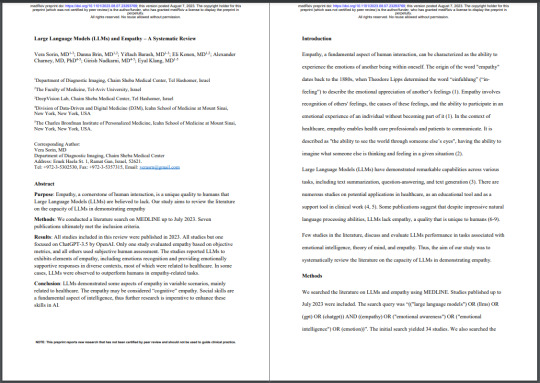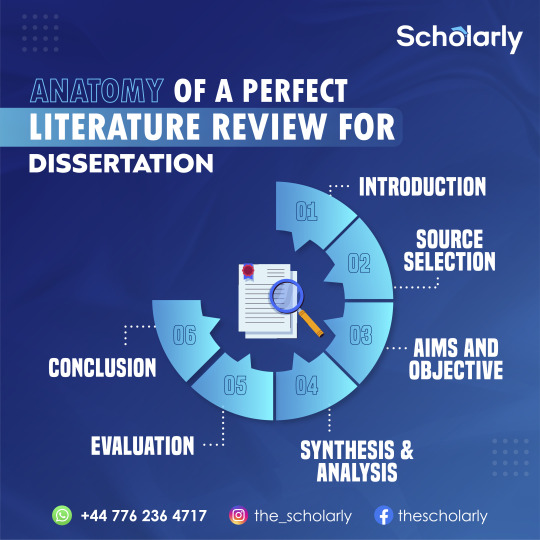#literaturereview
Photo

BEAUTIFUL LOSERS
I'm reading Leonard Cohen's Beautiful Losers,
Before I even started, I read somewhere that back in the day, the good old 60's, the novel was very much regarded as controversial, mainly for its explicitely sexual content. I can't say I'm a fan of such literature myself, but knowing Cohen's aesthetic - in my eyes a monk wearing worn out adidas shoes who tries his best to catch a glimpse of woman's panties in order to be able to go to church and confess his sins - I genuinely couldn't help myself and had to get a copy of my own.
I'm not yet done with it but so many thoughts keep invading me as I progress towards the end of the novel. What a masterpiece, truly. At the beginning, it felt more like every other short story by Bukowski - the dirt, the vulgar scenes, the civil poetry of any other instinct driven, low, human being. The only thing missing was an excessive amount of alcohol, drugs and prostitutes and at certain point I was more or less sure it would come eventually.
Oh boy, how wrong I was. It's been a while since any book captivated me so much. Despite (and I keep thinking whether despite is even the right word to use, honestly) its prominently sexual nature, the beautiful poetry laying underneath is nothing short of striking. Hm, perhaps the best metaphore that summarizes Cohen's poetry to me is kintsugi (=japanese art, maybe rather an approach to art, in which broken things are again mended together in order to be perceived beautiful once more, not despite its obvious flaws but even with them).
He breaks it down for you and then serves it in a very particular fashion, makes you cringe a little, smile a little, think a little. It just doesn't cease to amaze me how amazingly abstract and yet completely tangible the whole novel feels.
And oh my goodness, excuse my babbling, but it's so hard to organise my thoughts sometimes, which is exactly the reason why I need this blog.
Anyway, the longer you read, the more you realise that sex in the novel isn't necessarily about sex itself, but rather a symbol of despair (merely my interpretation really). Cohen shows you what's left of a person once he dives in the bottomless pit of his own painful existence. Perhaps, within the context of the novel, it could be read as a memento? What makes me question that is the fact, that erotic aspect shows up more and more as you progress, as the protagonist progresses himself.
I guess I'll add more thoughts on this once I'm done reading it, I'm not so far from finish. I'll also need to write a bit about Cohen's poetry later, lot of thoughts on that too.
11 notes
·
View notes
Text
Random Book Recommendation Coming Y’all’s Way: The Secret Life of Bees

The Secret Life of Bees by Sue Monk Kidd
To keep this review short & sweet, I found the book to also be short & sweet. It’s about a girl who runs away from home, & finds love amongst people who turn out to be not so different than she is.
ADB (Adjectives for Dis Bitty)
Creative, curious, sweet, heartwarming.
RDB (Rate Dat Bitty)
Creative & curious +4 points
Sweet & heartwarming +4 points
Total: 8/10.
Do I recommend this read? Absolutely, particularly for the younger set.
Any Trigger Warnings? Yes. Includes racism & child abuse.
__________________________
Peace, love, and literature xx
Mac
4 notes
·
View notes
Photo

HMU for essays, projects, dissertation, research papers, peer reviews, literature reviews, articles and all school assignments in all subjects. Whatsapp: +1 (203) 864‑4373 #project #projects #school #schoolmemes #mathematics #calculus #statistics #economics #english #literaturereview #literature #literaturequotes #philosophy #psychology #chemistry #biology #biochemistry #history #proffesor #university #college #paper #researchpaper #researchpapers #dissertation #summer #algebra #algebra2 #algebrahelp #memes😂 (at Houston Texans) https://www.instagram.com/p/CeBnBAIMGcT/?igshid=NGJjMDIxMWI=
#project#projects#school#schoolmemes#mathematics#calculus#statistics#economics#english#literaturereview#literature#literaturequotes#philosophy#psychology#chemistry#biology#biochemistry#history#proffesor#university#college#paper#researchpaper#researchpapers#dissertation#summer#algebra#algebra2#algebrahelp#memes😂
3 notes
·
View notes
Text
Basics of Time Management for Students
#tutorsindia#full dissertation help#dissertationwritinghelp#essaywriting#research#literaturereview#researchproposal#masterthesiswriting#masterdissertationwriting#research methodology
0 notes
Link
#powerpoint #capstoneproject #requirements #undergraduatestudents #integration #knowledge #skills #topicselection #literaturereview #research #crediblesources #researchquestions #methodology #presentationstructure #slidedesign #logicalflow #professionalquality #communication #evaluation #feedback
#requirements#powerpoint#capstone projects#capstoneproject#undergraduatestudents#integration#knowledge#skills#topicselection#literature review#literaturereview#research#crediblesources#researchquestions
0 notes
Link
#PowerPointCapstoneProject #AcademicExperience #UndergraduateStudents #TopicSelection #LiteratureReview #ExistingKnowledge #ResearchQuestions #ThesisStatement #MethodologyDesign #PresentationStructure #SlideContent #PurposeEstablishment #AnalyticalApproach #VisualElements #Proofreading #LivePresentation #CommunicationSkills #Grading #Evaluation #ChoosingATopic #ImportantFactors
#requirements#PowerPointCapstoneProject#academicexperience#undergraduatestudents#topicselection#literature review#literaturereview#ExistingKnowledge#researchquestions#thesis statement#thesisstatement
0 notes
Text
Word Solvo
Word Solvo offers academic services guidance like essay, case study, reports, business plan, dissertation, reflection, thesis and others to students baffled by complex new requirements for completing higher studies.
#contentmarketing#academicwriting#coursework#termpaper#businessplan#reflectivewriting#literaturereview#casestudy
0 notes
Text
Unraveling the Structure of Scientific Paper Writing
Scientific paper writing is an intricate process that serves as the backbone of academic communication. As scholars strive to share their findings with the global scientific community, mastering the art of structuring a scientific research paper becomes paramount. In this blog, we will delve into the essential elements that constitute the structure of scientific writing, highlighting the key components that contribute to a coherent and impactful paper.

Understanding the Structure of Scientific Writing
Title and Abstract: The Gateway to Your Research
The journey into a scientific paper begins with a captivating title and a concise abstract. These elements play a pivotal role in attracting readers and providing a snapshot of the study. The title should be informative, engaging, and reflective of the research's core focus. Meanwhile, the abstract succinctly outlines the objectives, methods, results, and conclusions of the study.
Introduction: Setting the Stage
The introduction serves as the foundation of the scientific paper, presenting the research problem, its significance, and the overarching goals. It concludes with the research hypothesis or questions, creating a roadmap for readers to follow. A well-crafted introduction not only informs but also captivates the audience, compelling them to delve deeper into the paper.
Literature Review: Contextualizing Your Research
The literature review establishes the context of the study by reviewing existing research relevant to the topic. It showcases the gaps in knowledge that the current research aims to fill and provides a theoretical framework for understanding the research problem. Effective integration of existing literature strengthens the paper's credibility and demonstrates the researcher's awareness of the field.
Methodology: Unveiling the Research Design
This section details the methods employed to collect and analyze data. It should be comprehensive enough for another researcher to replicate the study. From the experimental design to data collection and statistical analysis, transparency and precision are paramount. Clarity in methodology ensures the validity and reliability of the study, fostering trust among peers.
Results: Data Unveiled
Presenting the findings is a critical aspect of a scientific paper. Results should be presented objectively, using tables, figures, and graphs to enhance clarity. A detailed narrative should accompany these visual aids, explaining the significance of each result. Avoid interpretation at this stage, focusing solely on presenting the raw data.
Discussion: Interpreting the Findings
The discussion section is where the researcher interprets the results in the context of the study's objectives and relevant literature. It is essential to highlight patterns, correlations, and discrepancies and discuss their implications. Acknowledge limitations and propose avenues for future research. A well-structured discussion demonstrates the researcher's analytical prowess and the ability to draw meaningful conclusions.
Conclusion: Summing Up the Journey
The conclusion reiterates the key findings and their implications, providing a concise summary of the study. Avoid introducing new information in this section; instead, focus on reinforcing the study's contributions and their broader implications for the field.
References: Giving Credit Where It's Due
Accurate citation is crucial in scientific writing. The references section provides a comprehensive list of all sources cited in the paper. Follow the citation style specified by the target journal to ensure consistency and adherence to academic standards.
Acknowledgments: Recognizing Contributions
The acknowledgments section allows researchers to express gratitude for any assistance received during the study. This can include funding sources, technical support, or input from colleagues. While not mandatory, acknowledging contributions enhances the paper's transparency and the researcher's credibility.
Appendices: Supplementing Information
Complex data sets, additional details on methodology, or supplementary materials can be included in the appendices. This section is optional but provides an opportunity to offer in-depth information without cluttering the main body of the paper.

Structure of Scientific Writing
Understanding the structure of scientific paper writing is fundamental for researchers aiming to communicate their findings effectively. A well-organized paper enhances readability and ensures that the research is presented in a logical and coherent manner.
Structure of Scientific Research Paper
The structure of a scientific research paper follows a standardized format, comprising distinct sections that collectively convey the research process and findings. Mastering this structure is essential for researchers to navigate the intricate world of academic publishing.
Scientific Paper Writing Services
For those navigating the complexities of scientific paper writing, professional services can provide invaluable assistance. Scientific paper writing services offer support in crafting well-structured, clear, and impactful papers, ensuring that research is effectively communicated to the intended audience.
Conclusion
In the intricate tapestry of scientific writing, each section plays a vital role in ensuring the clarity, credibility, and impact of the research. Researchers must navigate through the intricacies of each component, weaving a narrative that not only communicates their findings but also contributes meaningfully to the broader scientific discourse. As we unravel the structure of scientific paper writing, we equip ourselves with the tools to convey the fruits of our labor to the global scientific community with precision and impact.
#ScientificWriting#ResearchPaperStructure#AcademicCommunication#PaperWritingTips#ScientificResearch#WritingCommunity#AcademicPublishing#ResearchMethodology#ScholarlyWriting#ScienceCommunication#ResearchFindings#LiteratureReview#DataAnalysis#ResearchJourney#CiteYourSources#AcademicStandards#PaperStructure#WritingServices#ResearchInsights#PeerReviewProcess
0 notes
Text
Analysis of: "Large Language Models (LLMs) and Empathy – A Systematic Review" by Department of Diagnostic Imaging, Chaim Sheba Medical Center

PDF download: https://www.medrxiv.org/content/medrxiv/early/2023/08/07/2023.08.07.23293769.full.pdf
Here is a summary of the key points in this discussion:
The document is a systematic literature review that aims to evaluate the capacity of large language models to demonstrate empathy.
It conducts a comprehensive search of studies evaluating empathy in LLMs and applies inclusion/exclusion criteria to identify 7 relevant publications.
The review finds LLMs exhibit elements of cognitive empathy like emotion recognition and providing emotionally supportive responses.
It acknowledges limitations in generalizing findings given most studies evaluate one LLM and calls for more research on social skills.
The summary, methodology, and conclusions are evaluated to adhere properly to the systematic review genre and knowledge in the field.
Stakeholders, perspectives considered, and implications for related topics are thoughtfully analyzed.
Overall the review is found to present a reasonably objective analysis to establish an initial understanding while recognizing ongoing progress is needed.
Interactive discussion helps fully evaluate multiple aspects of the document's relevance, strengths, limitations and usefulness for experts.
Here is a summary of the key points from the document in bullet points:
The study aimed to systematically review the literature on the capacity of large language models (LLMs) to demonstrate empathy.
A literature search was conducted on MEDLINE up to July 2023, identifying 7 publications that met the inclusion criteria.
All included studies were published in 2023 and evaluated empathy exhibited by ChatGPT-3.5, except one study which also evaluated a model based on LLaMA and GPT-4.
The studies reported that LLMs exhibited elements of empathy through emotion recognition, providing emotionally supportive responses, and showing empathy in medical contexts like breaking bad news, caring for cancer patients, and responding to patient questions.
In some cases, LLMs were observed to outperform humans in empathy-related tasks according to objective metrics.
LLMs showed limitations like occasional deviations from correct responses, short-term memory constraints, and repetitive empathy expressions.
The empathy demonstrated by LLMs was considered a form of "cognitive empathy" involving understanding others' feelings rather than experiencing affective empathy.
Further research is needed to enhance social skills in AI, which are fundamental to intelligence. Developing empathy in LLMs could improve their roles in healthcare.
Based on its content and structure, this document appears to be a systematic literature review.
Some evidence that suggests it is a systematic review:
It clearly states its objective is to systematically review the literature on a specific topic (the capacity of LLMs to demonstrate empathy).
It describes a systematic search process that was conducted of a specific database (MEDLINE) up to a certain date, with inclusion/exclusion criteria applied to identify relevant studies.
It presents the results of the included studies summarizing their objectives, methods, findings and limitations in a structured manner (in a table).
It discusses the findings from the included studies in an analytical manner to draw overall conclusions. It acknowledges limitations of the review.
It follows the typical sections and organization of a systematic review - introduction, methods, results, discussion.
The hallmarks of having a focused question, predefined search/selection criteria, structured analysis/presentation of included studies and drawing evidence-based conclusions designate this as belonging to the genre of a systematic literature review. Its publication on a preprint server rather than a journal also aligns with it being work in progress rather than a final published review.
Here are some key stakeholders that could be affected by this document and brief evaluations:
AI researchers/developers - Provides insights to guide further research on developing empathy/social skills in LLMs. Could influence priorities.
Healthcare providers - Highlights potential benefits but also limitations of LLMs if used in clinical settings requiring empathy. Important considerations.
Patients - May influence public perceptions of and trust in LLMs for healthcare use cases. Ensures patient well-being is prioritized in research.
Ethics boards/regulators - Helps inform governance/guidelines on appropriate LLM applications and human-AI interaction design. Mitigates potential harms.
Journal publishers - Could impact decisions to publish/fund future related research given topic's importance and emerging nature. Promotes progress.
Model owners - Findings offer guidance but also responsibility to address issues to build robust, trustworthy and beneficial systems. Positive impact if changes are made.
Overall, while no single stakeholder is directly impacted, the review stands to reasonably inform and influence all parties to help develop LLMs and their applications responsibly, prioritizing users/the public to maximize benefits and mitigate risks. More research will better serve stakeholders through continued knowledge growth.
Here is an evaluation of the document in relation to the topic of large language models demonstrating empathy:
Relevance: The document is directly and fully focused on evaluating the state of research on this topic, making it highly relevant.
Coverage: As a systematic review, it comprehensively surveys the literature to date from multiple studies to develop an overview of the current landscape.
Insights: It synthesizes findings to provide helpful takeaways, such as the distinction between cognitive vs affective empathy in LLM abilities.
Analysis: The discussion critically analyzes limitations and considerations to draw evidence-based conclusions rather than unsupported assertions.
Objectivity: Methodical search and selection processes along with acknowledging shortcomings enhance objectivity.
Confirmability: Results presented allow readers to judge for themselves how well conclusions follow from the evidence.
Timeliness: As a pre-print, it helps inform an emergent area while interest and research are expanding rapidly.
Guidance: The review offers useful guidance for both continuing research efforts and evaluating future model and application development.
Overall, the document exhibits strong relevance, informative coverage, and reasonably objective analysis to help establish an initial benchmark for understanding how well LLMs can demonstrate empathy based on current evidence. It represents a valuable contribution and resource for scholars in this developing field.
Here is an evaluation of the document's perspective on the empathy demonstrated by LLMs being considered a form of "cognitive empathy":
Alignment with definitions: The characterization fits with established definitions that delineate cognitive empathy as understanding others' feelings versus affective empathy as experiencing emotional resonance.
Support from evidence: The studies reviewed found LLMs capable of recognizing and responding to emotions, corresponding to cognitive abilities, but not exhibiting affective components like humans.
Plausible interpretation: Given current limitations, viewing LLM empathy as cognitive provides a coherent framework for interpreting observed behaviors within constraints.
Open to revision: The authors acknowledge ongoing research is needed as models advance, leaving room for the perspective to be refined as understanding improves.
Mitigates anthropomorphism: Considering LLM empathy cognitive rather than asserting equivalency to humans helps avoid attributing more humanlike qualities than are demonstrated.
Informs future work: The framing offers sensible guidance for continued exploration of social skills in AI and distinguishing targeted capabilities.
Overall, categorizing LLM empathy exhibited so far as cognitive aligns logically with presented evidence, avoids unsupported conclusions, and provides a constructive lens for ongoing progress. This enhances the credibility and usefulness of the perspective presented in the review.
Here is an evaluation of how the document relates to the topic of social skills in AI:
Relevance: It directly discusses an important social skill (empathy) shown by AI systems, making the topic highly relevant.
Importance: By demonstrating empathy is fundamental to intelligence, it emphasizes the importance of advancing social skills in AI.
Awareness: It shows awareness that while progressing, current AI still lags humans in fully emotive social interaction abilities.
Guidance: Calling for further research provides actionable guidance toward more humanlike socio-emotional capabilities.
Balanced perspective: It offers realistic insight into limitations while also seeing potential based on reviewed evidence.
Considerations: Broader discussion of implications informs stakeholders on technical, application and policy issues.
Progress tracking: As a review, it establishes a baseline for tracking advancement over time as the field matures.
Multidisciplinary lens: Examining an AI skill through both technical and social scientific definitions enriches the view.
Overall, the document takes a well-informed, balanced and constructive approach to relating AI empathy demonstrations to the importance of continued work on general social capabilities. This makes it a useful contribution to better understanding and progressing this important aspect of AI development.
It's difficult to definitively evaluate this document against an established consensus on this topic, as research on LLM empathy capabilities is still emerging.
However, here are some observations:
The document is consistent with other analyses that LLMs show promise in limited demonstrations of empathy-related behaviors, but the field requires ongoing examination (no consensus claims they have achieved human-level empathy).
Findings that ChatGPT in particular exhibits some emotional understanding and support align with anecdotal reports, but many studies are needed for firm conclusions.
Observation that performance may involve "cognitive empathy" rather than full affective empathy aligns with speculation by other scholars on limitations.
Need for distinguishing objective metrics from subjective impressions echoed in other reviews.
Caution around generalizing from single models is prudent, as consensus has not formed on all models.
Calling for further research coincides with view that more examination is warranted as LLMs and tasks evolve rapidly.
So while no definitive consensus exists yet on a young topic, the review's perspectives do not appear to contradict preliminary insights from the wider research community. If anything, it helps add to the initial baseline under discussion. As the field matures and more studies accumulate, future reviews will better gauge any evolution in the consensus view. But this document engages thoughtfully with speculative discussions so far.
Based on the content and methodology presented in the document, here is my evaluation of its status:
Science vs Fiction: As a systematic literature review of published studies, the content is firmly grounded in science rather than fiction.
Empirical vs Anecdotal: The findings synthesized are based on empirical data and evaluations reported across multiple included studies, rather than anecdotal observations.
Fact vs Opinion: While some subjective human assessments are reported, the document relies predominantly on objectively reported results and aims to draw evidence-based conclusions, rather than assert opinions.
Objective vs Subjective: The literature search process, study selection criteria and data extraction are objective and systematic. However, some included studies involve subjective evaluations of LLM empathy. The discussion also acknowledges limitations in fully objective assessment of this topic.
In summary, as a scholarly work grounded in published evidence and following systematic review methodology, this document is firmly positioned towards the science, empirical and factual end of the relevant spectrums. While not entirely devoid of some inevitable subjective components given the nature of studying AI empathy, the overall approach and reliance on multiple studies makes it a relatively objective analysis compared to opinion or anecdote-driven perspectives. The limitations also help provide appropriate context around its conclusions.
Upon reviewing the document, I did not find any clear logical fallacies.
The authors made reasonable conclusions based on evaluating the available evidence from the included studies. Some potential minor issues are:
Limited generalizability fallacy - The review focused mostly on one LLM (ChatGPT), so conclusions may not generalize to all models. But authors acknowledge this scope limitation.
Presentism bias - Evaluating LLMs today based on current capabilities, without considering likely improvements over time as the field advances. However, authors note need for ongoing research.
Anecdotal evidence - A few studies rely on subjective human assessments rather than objective metrics. But most studies still provide empirical evidence, and limitations are acknowledged.
Correlation vs causation - Finds associations between LLM performance and empathy-like behaviors, but cannot prove LLMs experience empathy the same way humans do. Authors characterize it as "cognitive empathy".
Overall, I did not find any logical fallacies that clearly undermine the document's conclusions. The authors took reasonable steps to ground their review in evidence from multiple sources and acknowledge restrictions or weaknesses in their approach. Minor issues like limited generalizability and overlooking future progress are inevitable given the nature of the emerging field. But the review represents a logically sound initial effort to synthesize available knowledge on this topic.
Here are some common evaluation criteria for a systematic literature review genre and my evaluation of this document based on each criteria:
Clear research question/objective - The objective to review literature on LLMs capacity for empathy is clearly stated.
Comprehensive literature search - The search process and criteria appears thorough, searching a relevant database and following PRISMA guidelines.
Appropriate selection of studies - Inclusion criteria focuses studies directly assessing the objective. Exclusion criteria removes unrelated work.
Critical appraisal of studies - Studies are critically analyzed by summarizing their methods, findings and highlighting limitations.
Synthesis of findings - Key results are categorized thematically in the results table and discussion to derive overall conclusions.
Rigor of methodology - The search, selection and analysis process follows systematic review methodology rigorously.
Consideration of limitations - Study acknowledges own limitations like only evaluating one LLM mostly.
Valid interpretation of findings - The conclusions drawn align with the presented findings from the included studies.
Clear structure and writing - The document is well structured following sections of an systematic review and the writing is clear.
Overall, this document demonstrates strong adherence to the criteria expected of a systematic literature review genre based on my evaluation across the listed criteria.
#AIethics#EmpatheticAI#HealthcareAI#LLMs#Chatbot#Medicine#SystematicReview#LiteratureReview#MachineLearning#Neuroscience#Psychology#Emotions#MentalHealth#PatientCare#MedicalResearch#DataScience#NLP#SocialSkills#ConversationAI
0 notes
Text

A literature review is a crucial academic exercise that aims to provide a comprehensive overview and critical analysis of existing research and scholarly works on a specific topic.
A well-structured literature review typically consists of several key components:
1. Introduction: Describe the significance and scope of the topic.
2. Source Selection: Explain the review's criteria and sources.
3. Aims and Objective: Outline the Goals and Purposes of the Review.
4. Synthesis and Analysis: Summarize the findings, techniques, and arguments.
5. Evaluation: Examine the advantages, disadvantages, and biases of each source.
6. Conclusion: Review the key points, the gaps, and the problems.
Having trouble with literature review writing?
Contact our experts for a successful review!
#literaturereview#literaturereviews#literature#review#literatureislife#academicwriting#researchpaper#research#ExploringUK#ExploreUK#college#university#likes#UKstudentlife#Students#essaywriting#assignment#phd#homework#academiclife#gradlife#dissertationlife#scholarly#uk
0 notes
Text
What is ACADEMIC WRITING? (Part ONE)
#academicwriting#ProfessorEdu#assignmenthelp#essaywritingservice#researchpaper#thesis#scholarlywriting#citationstyle#apa#MLA#harvard#chicago#referencing#peerreview#academicpublication#literaturereview#writingtips#plagiarism#academicjournals#academicsuccess#academiclife#academicskills#dissertation#student life
0 notes
Link
Writing a Literature Review
0 notes
Text
Understanding the Differences Between Case Study, Essay, and Research Paper
A Comprehensive Guide
When it comes to academic writing, students encounter various types of assignments, including case studies, essays, and research papers. Each of these forms of writing has its own unique characteristics and serves distinct purposes. Understanding the differences between case studies, essays, and research papers is essential for students to excel in their coursework. In this…

View On WordPress
#AbstractWriting#academicresearch#AcademicResources#AcademicSuccess#academicwriter#academicwriting#APAStyle#Argumentation#casestudy#citationstyle#copywriting#criticalthinking#dataanalysis#Editing#EffectiveCommunication#essaywriter#essaywriting#Freelance#freelancewriting#literaturereview#MLAStyle#PlagiarismPrevention#pROOFREADING#remotework#researchpaper#ScholarlySources#seo#seowriting#solopreneur#studyskills
0 notes
Text

Utilize our outstanding Literature Review Help services to master the art of the literature review.
In order to help you create thorough and relevant literature assessment that add to the academic conversation, our experienced team offers expert guidance and efficient research.
#Eduwriters#literaturereview#dissertation#literature#thesis#essaywriting#research#assignments#researchpaper#studentsuccess#proofreading#coursework#financeassignmenthelp#literaturelovers#editing#assignmenthelp#onlineassignments#onlineexams#professionalacademichelp#literaturequotes#thesiswriting
0 notes
Text

Our Literature Review Assignment Service Provides Insights That Have Been Expertly Analyzed!
Explore academic works in-depth, discover important themes, and show your knowledge. Let our knowledgeable writers assist you in creating a thorough and compelling literature review!
#theassignmentshelp#literaturereview#dissertation#literature#thesis#essaywriting#research#assignments#university#education#researchpaper#literaturelover#studentsuccess#proofreading#onlineclasses#coursework#phdstudent
0 notes
